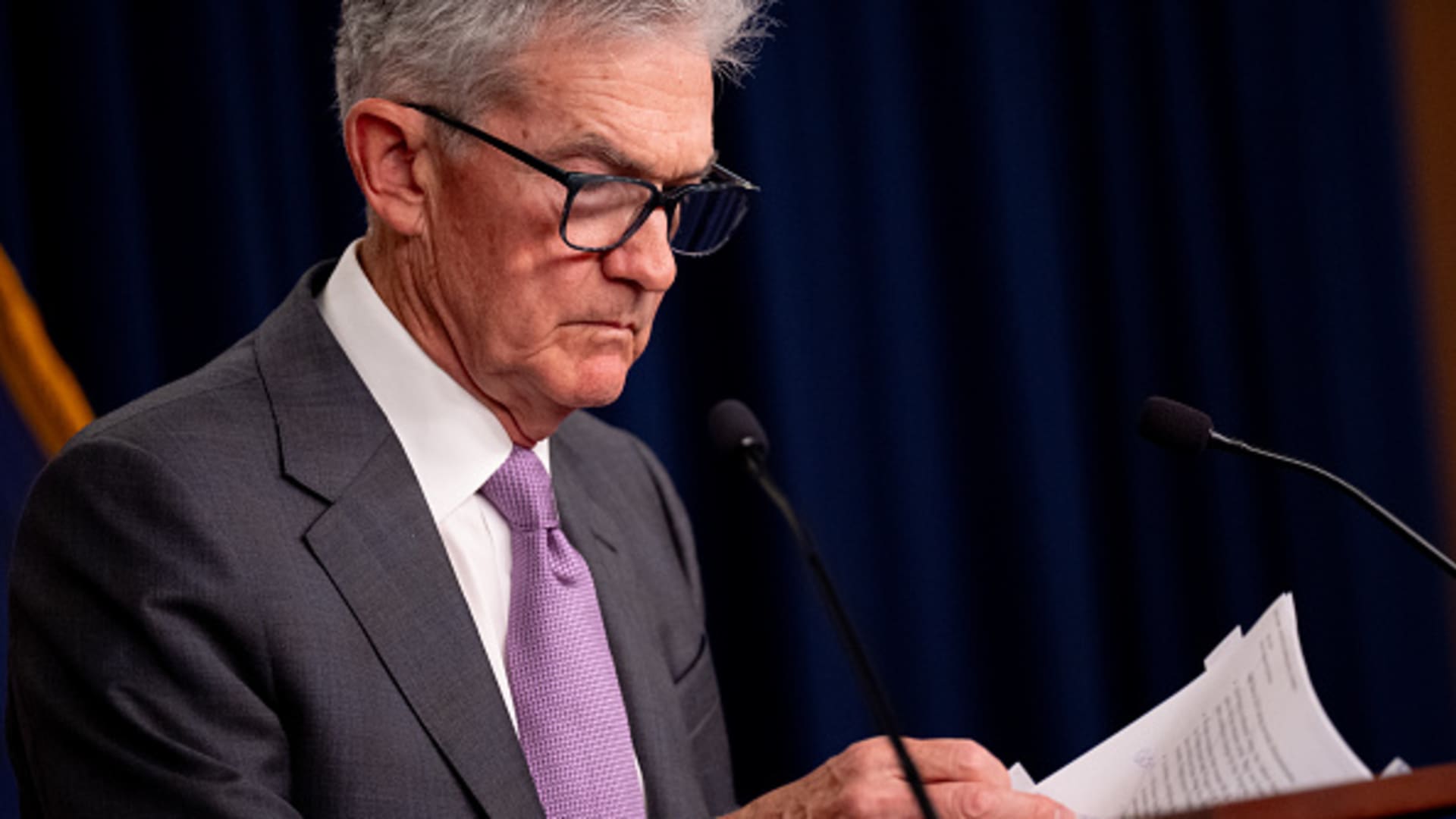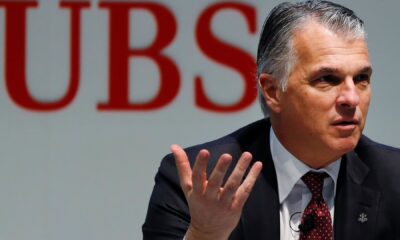Finance
The markets are counting on the Fed to avert the recession with significant interest rate cuts

Federal Reserve Chairman Jerome Powell answers a reporter’s question during a news conference following a Federal Open Market Committee meeting at the William McChesney Martin Jr. Federal Reserve Board Building on July 31, 2024 in Washington, DC.
Andrew Harnik | Getty Images
In the eyes of the market, the Federal Reserve is either on the cusp of averting a recession or doomed to repeat the mistakes of its recent past – when it was too late to see an approaching storm.
The response from Chairman Jerome Powell and his cohorts at the central bank will likely go a long way in determining how investors deal with such a turbulent environment. Wall Street has been on a wild ride in recent days, with a relief rally Tuesday mitigating some of the damage since recession fears mounted last week.
“In short, no recession today, but one will become increasingly inevitable by the end of the year if the Fed doesn’t act,” Steven Blitz, chief U.S. economist at TS Lombard, said in a note to clients. “But they will, starting with a [half percentage point] cut in September, telegraphed at the end of August.”
Blitz’s comments represent the widespread sentiment on Wall Street – little sense that a recession is inevitable, unless of course the Fed fails to act. Then the probability increases.
Disappointing economic data recently raised concerns that the Fed missed an opportunity at its meeting last week to send, if not an outright rate cut, a clearer signal that easing is coming. It helped bring back memories of the not-too-distant past, when Fed officials dismissed 2021’s rise in inflation as “transitory” and were forced into what ended up being a series of harsh rate hikes.
With a weak July jobs report and recession concerns mounting, the investment community wants the Fed to take strong action before it misses this opportunity.
Traders are pricing in a high likelihood of a half-point cut in September, followed by aggressive easing that could cut 2.25 percentage points from the Fed’s short-term interest rate by the end of next year, as shown in 30-day Fed Funds futures contracts. . The Fed currently targets its policy rate between 5.25% and 5.5%.
“The unfortunate reality is that a series of data confirms what the rise in unemployment now clearly signals: the U.S. economy is at best at risk of entering a recession and at worst already has,” Citigroup wrote- economist Andrew Hollenhorst. . “Data for the next month will likely confirm the continued slowdown [half-point] A cut in September is likely and a possible cut in the intermeeting is on the table.”
Emergency cut unlikely
With the economy still creating jobs and stock market averages near record highs despite the recent sell-off, an emergency cut between now and the September 17-18 Open Market Committee seems like a gamble at best.
The fact that it is even being talked about shows how deep the fear of a recession runs. In the past, the Fed has made only nine such cuts, and all came under extreme pressure, according to Bank of America.
“If the question is, ‘should the Fed now consider a cut in inter-meetings?’, we think history says, ‘No, not even close,'” said BofA economist Michael Gapen.
In the absence of a catalyst for an interim cut, the Fed is nevertheless expected to cut rates almost as quickly as it raised rates between March 2022 and July 2023. The process could get underway later this month when Powell delivers his expected keynote policy address at the Fed’s annual rate meeting. retreat in Jackson Hole, Wyoming. Powell is already expected to indicate how the easing path will unfold.
Joseph LaVorgna, chief US economist at SMBC Nikko Securities, expects the Fed to cut rates by 3 percentage points by the end of 2025, more aggressively than current market prospects.
“Go big or go home. The Fed has clearly said rates are too high. Why would they be slow to remove the tightness?” he said. ‘They will quickly cut back if the rates are not at the right level. Why wait?’
However, LaVorgna is not convinced that the Fed is in a life-and-death battle against the recession. However, he noted that “normalizing” the inverted yield curve, or bringing back higher yields on longer-dated securities than their shorter-dated counterparts, will be an integral factor in preventing an economic contraction.
Over the weekend, Goldman Sachs drew some attention when it raised its recession forecasts, but only from 15% to 25%. That said, the bank did note that one of the reasons it doesn’t believe a recession is imminent is that the Fed has plenty of room to cut spending by 5.25 percentage points if necessary, not to mention capacity to restart the well-known bond purchase program. as quantitative easing.
Still, any data shocks, such as Friday’s downward surprise in nonfarm payrolls, could quickly lead to recession talk.
“The Fed is as behind the economic curve now as it was in 2021-2022,” wrote economist and strategist David Rosenberg, founder of Rosenberg Research. He added that the increased expectation of spending cuts “smacks of a real recession scenario, because the Fed has rarely done this without an official economic downturn — heading into a recession, already in a recession, or limping out of it.” .”









